Abstract
The arthropod-borne encephalitides are an important cause of equine and human morbidity in the Americas. Between 1975 and 1978, 6970 human cases of arboviral encephalitis were reported in the United States of America; however, this represents only a fraction of the true incidence. St Louis encephalitis (4824 cases), California encephalitis (1035 cases), and western equine encephalitis (WEE, 947 cases) accounted for 98.5% of all reported infections. Approximately 1000-4000 cases of equine encephalitis occur annually in the United States, the majority due to WEE. In tropical America, important outbreaks of Venezuelan, eastern, and western equine encephalitis, and of Rocio encephalitis have occurred.
In this article, epidemiological aspects of arboviral encephalitis outbreaks occurring within the past 5 years are reviewed. In addition, summaries of current research activities on the ecology and epidemiology of St Louis, western equine, Venezuelan equine, Rocio, and California encephalitis viruses are presented, and the problem of control of these infections is discussed.
Full text
PDF
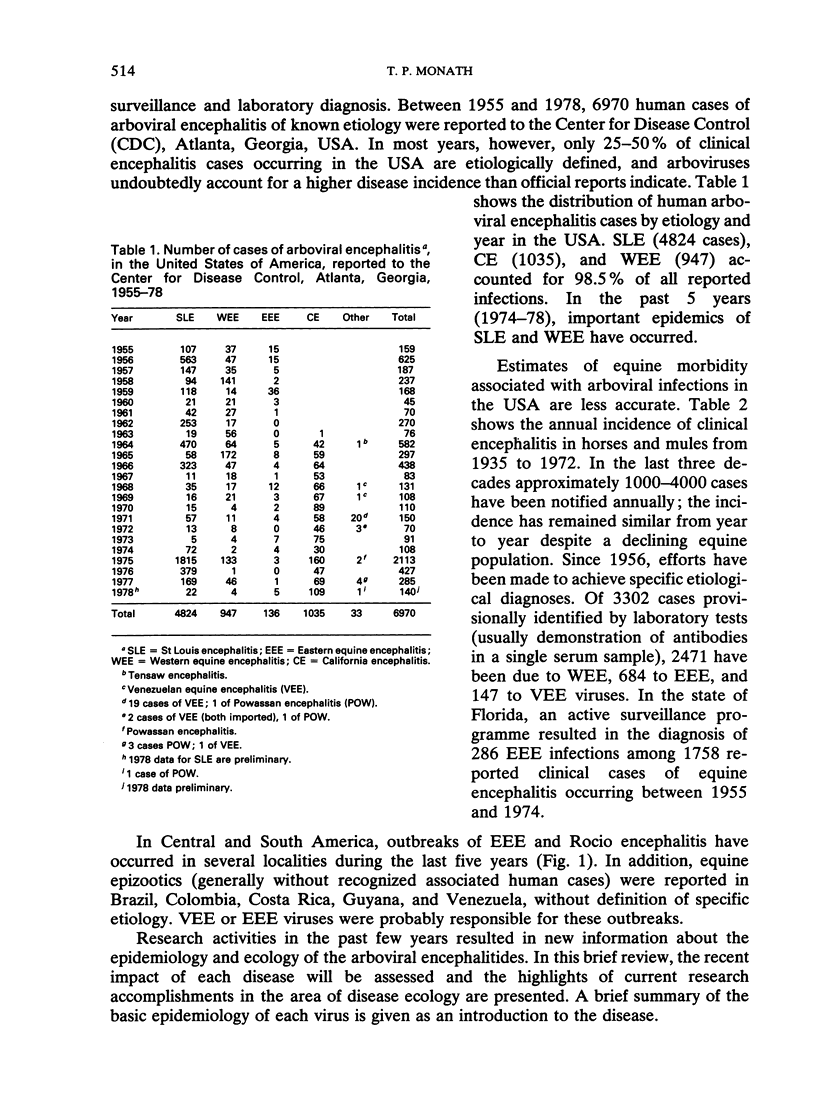
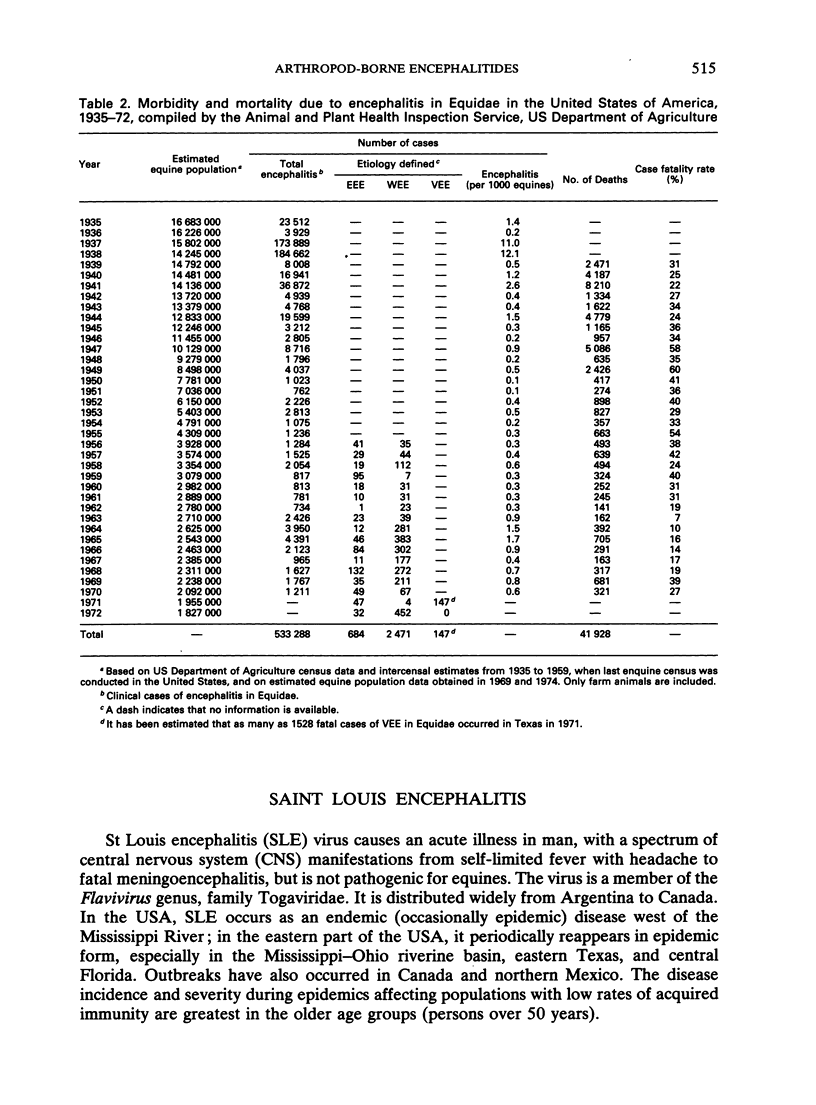
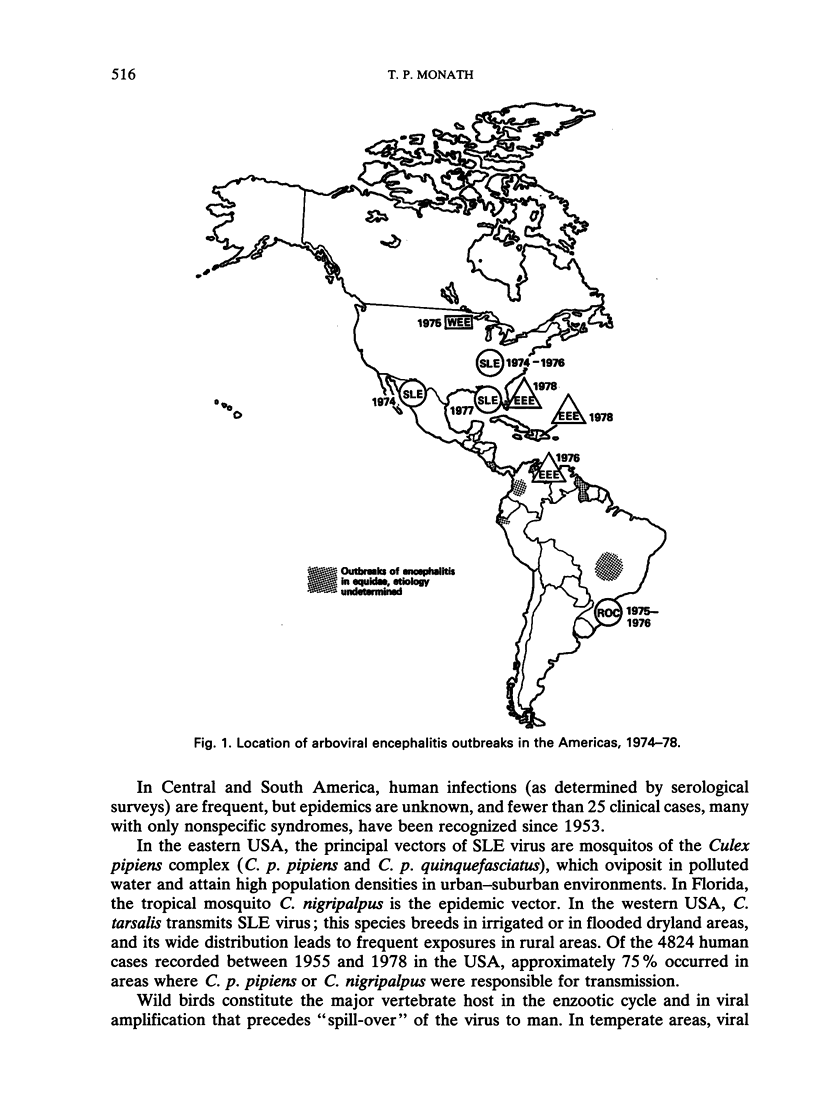

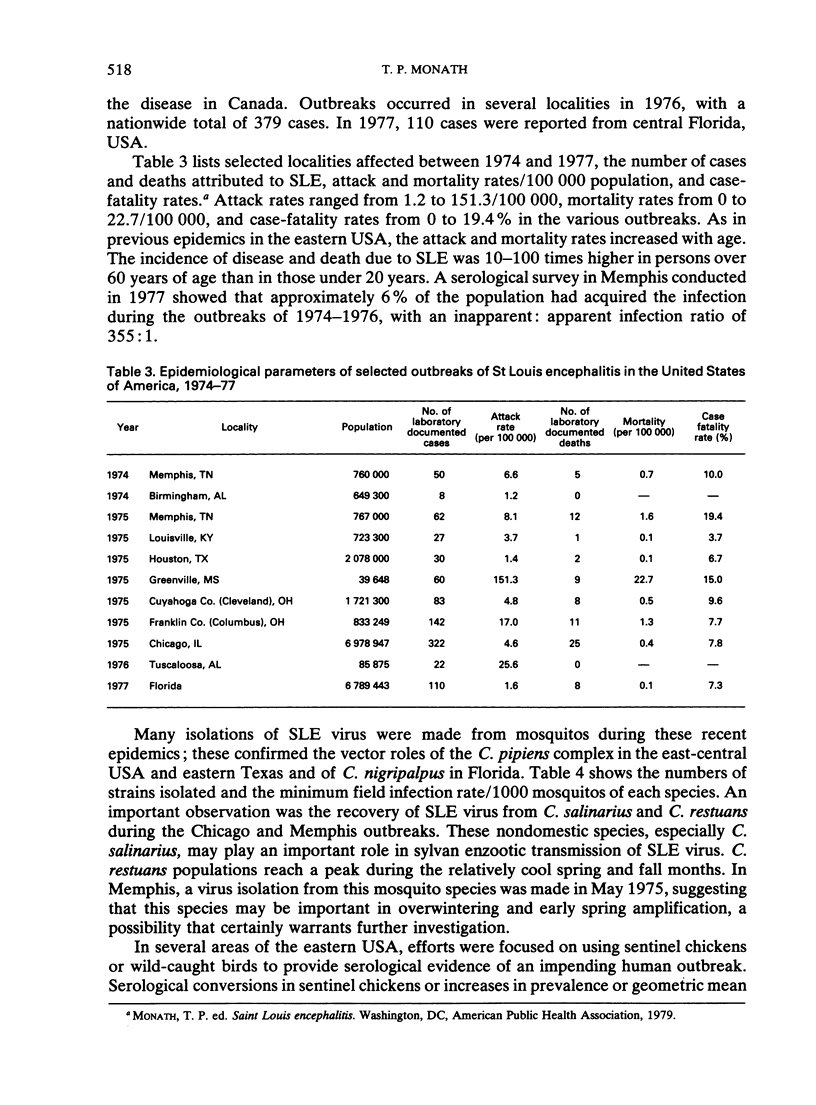
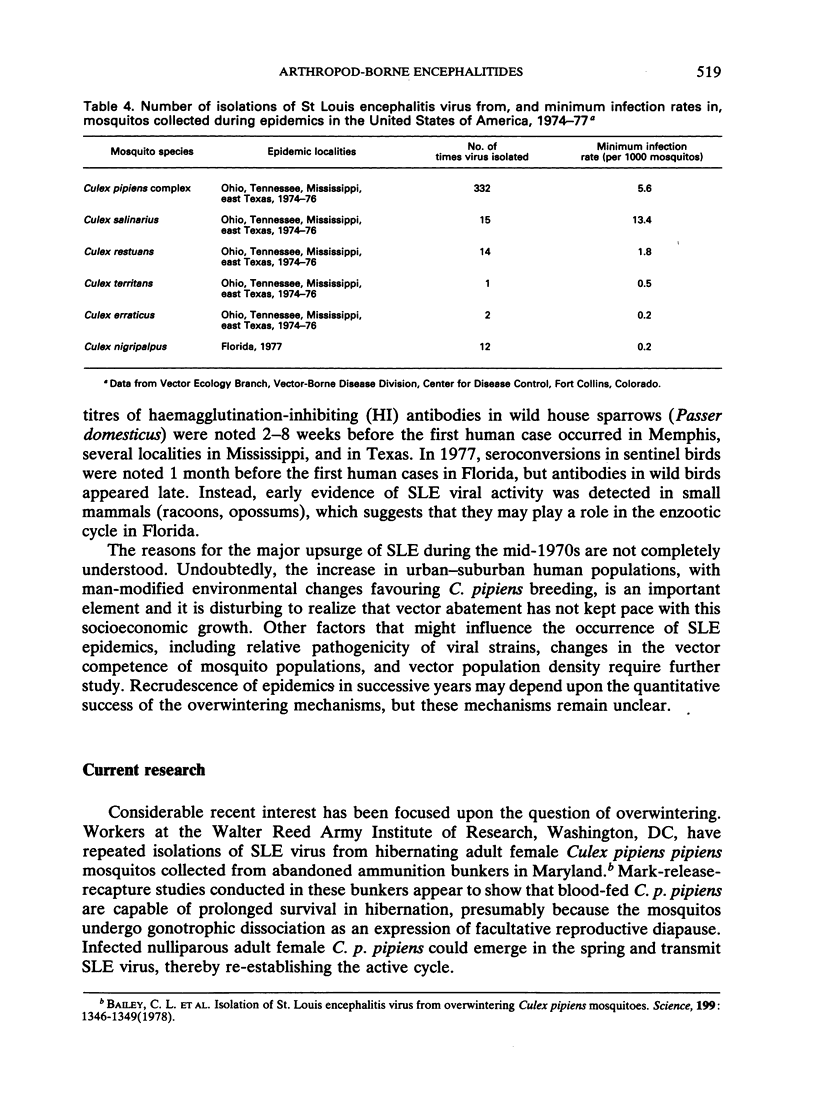
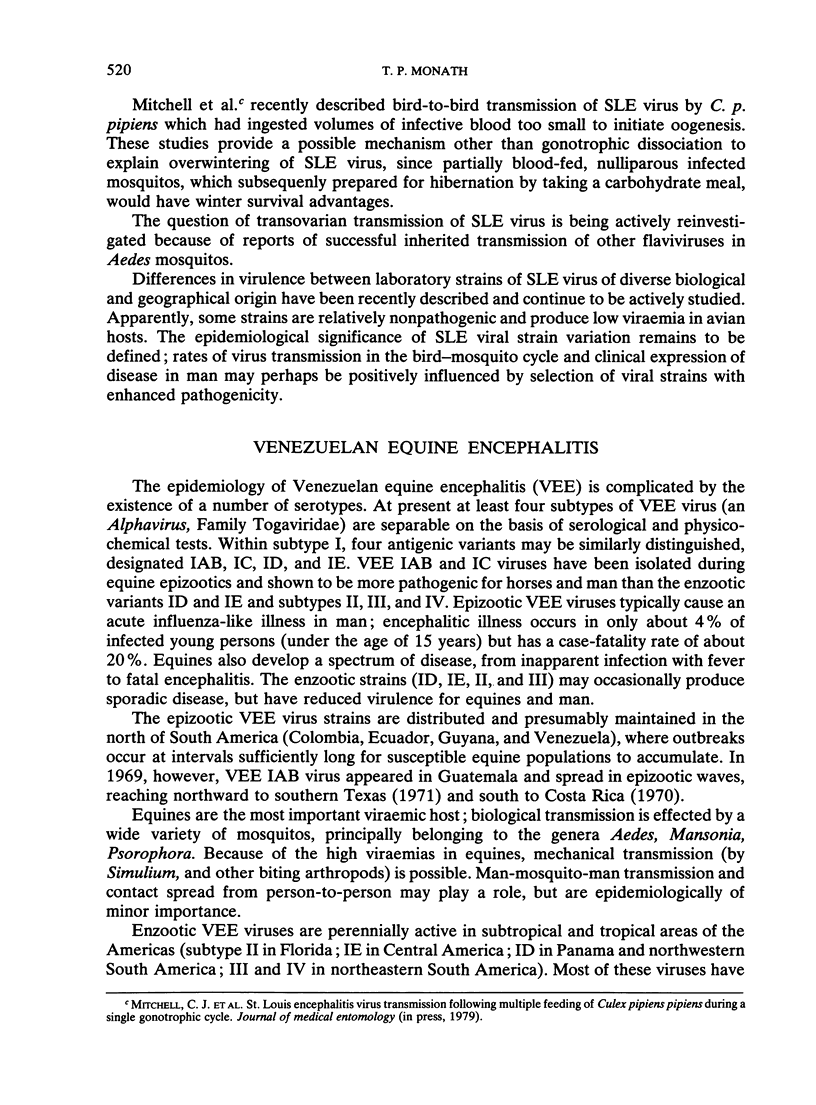
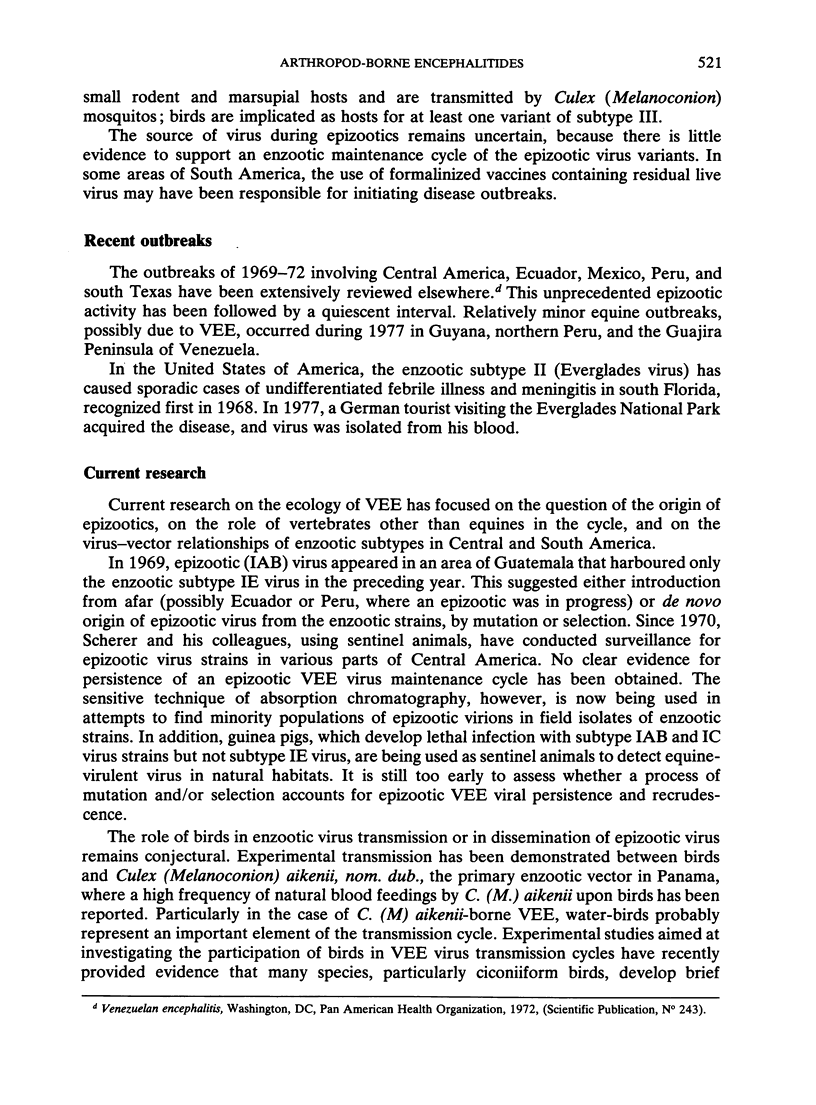
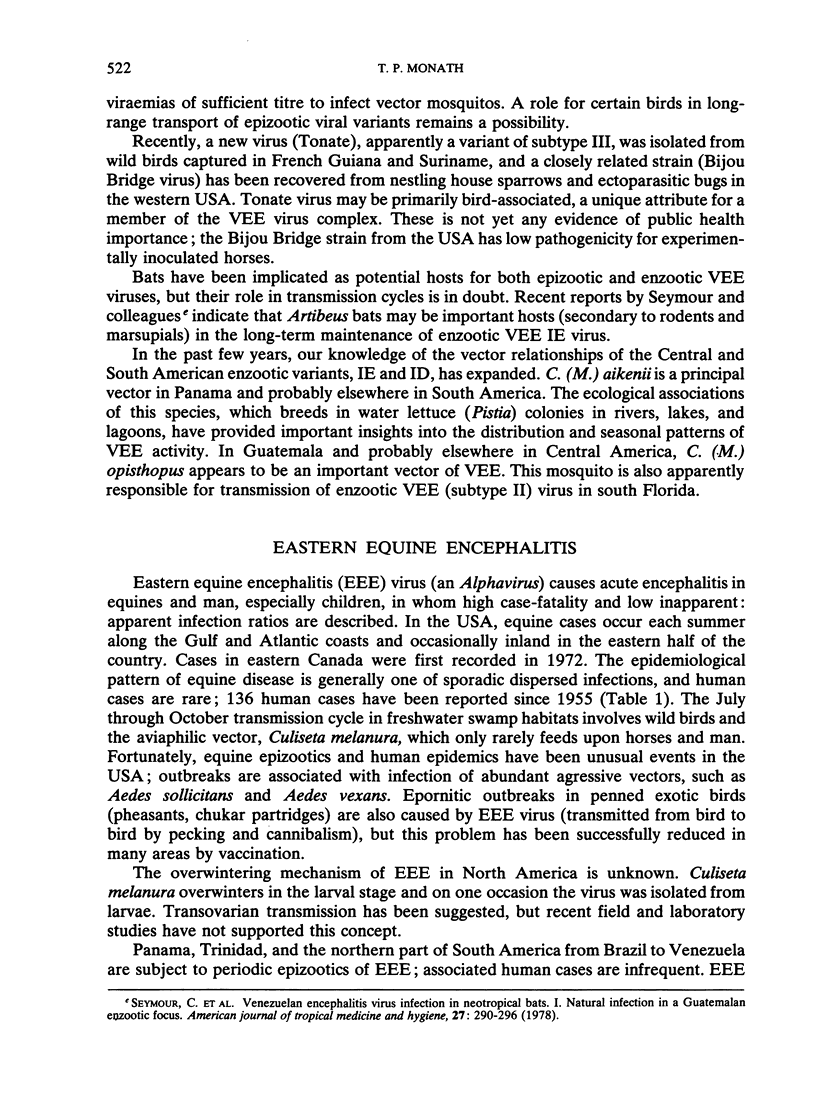
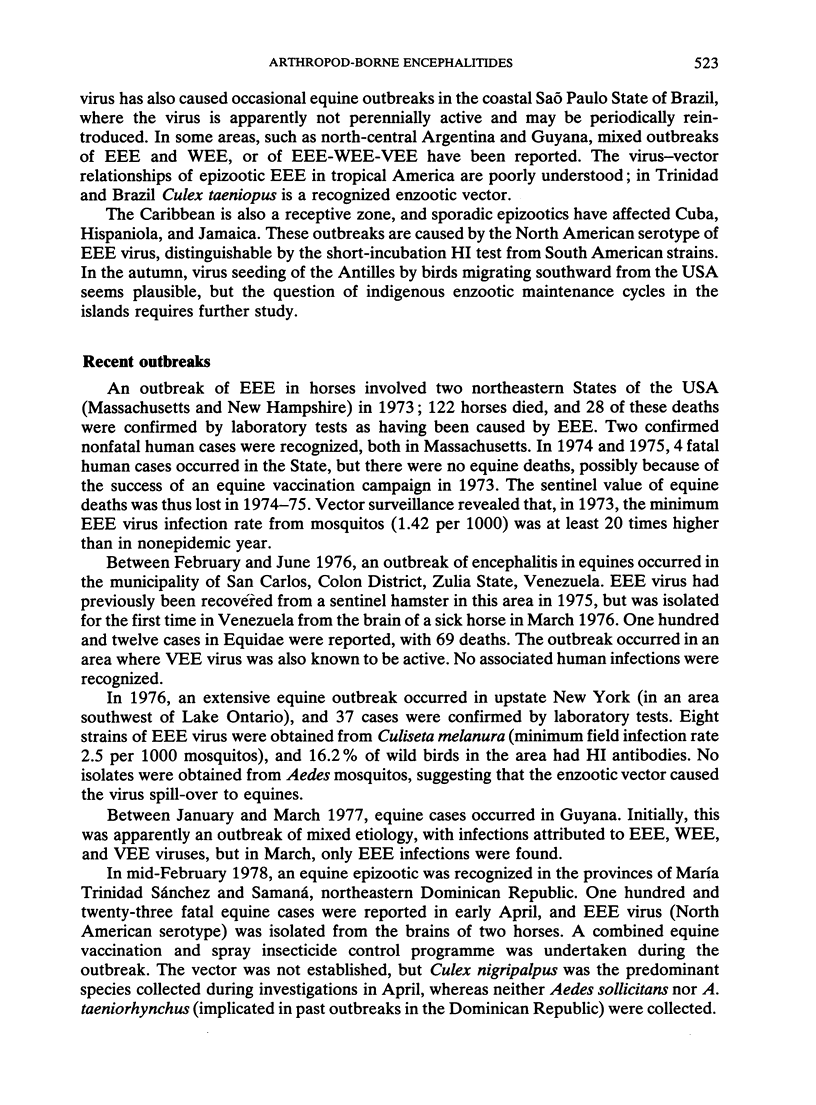



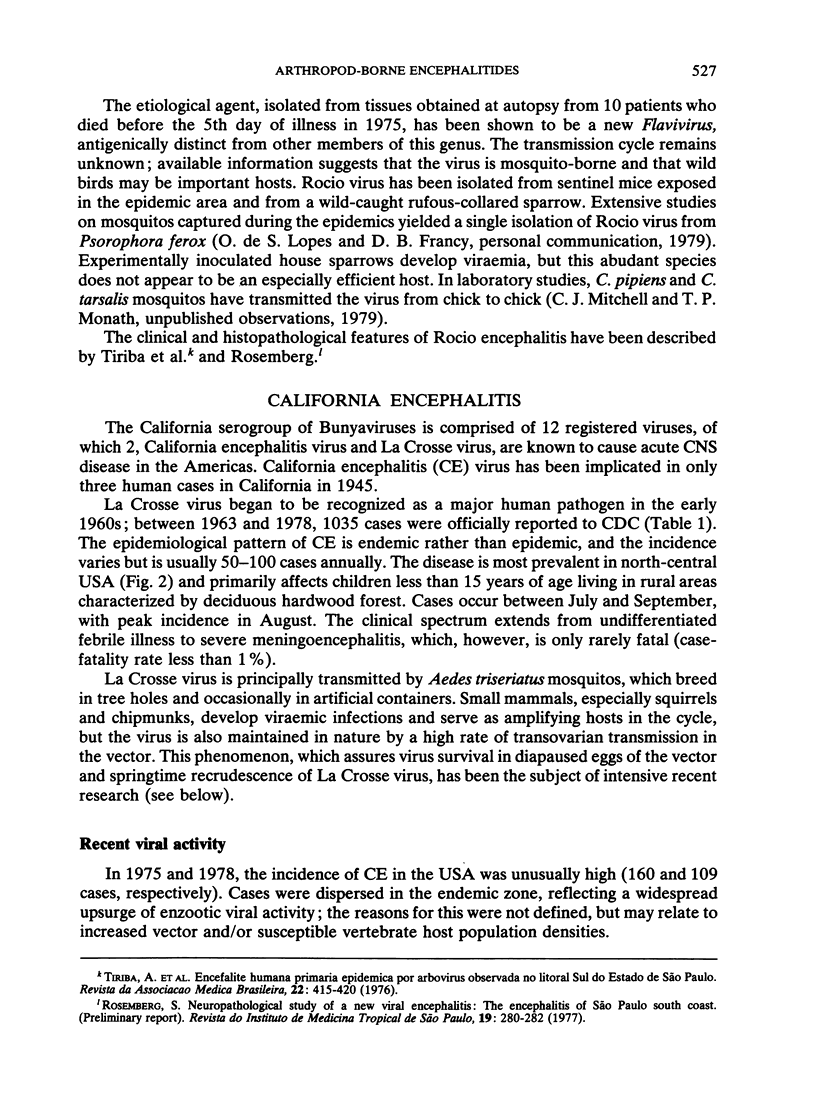
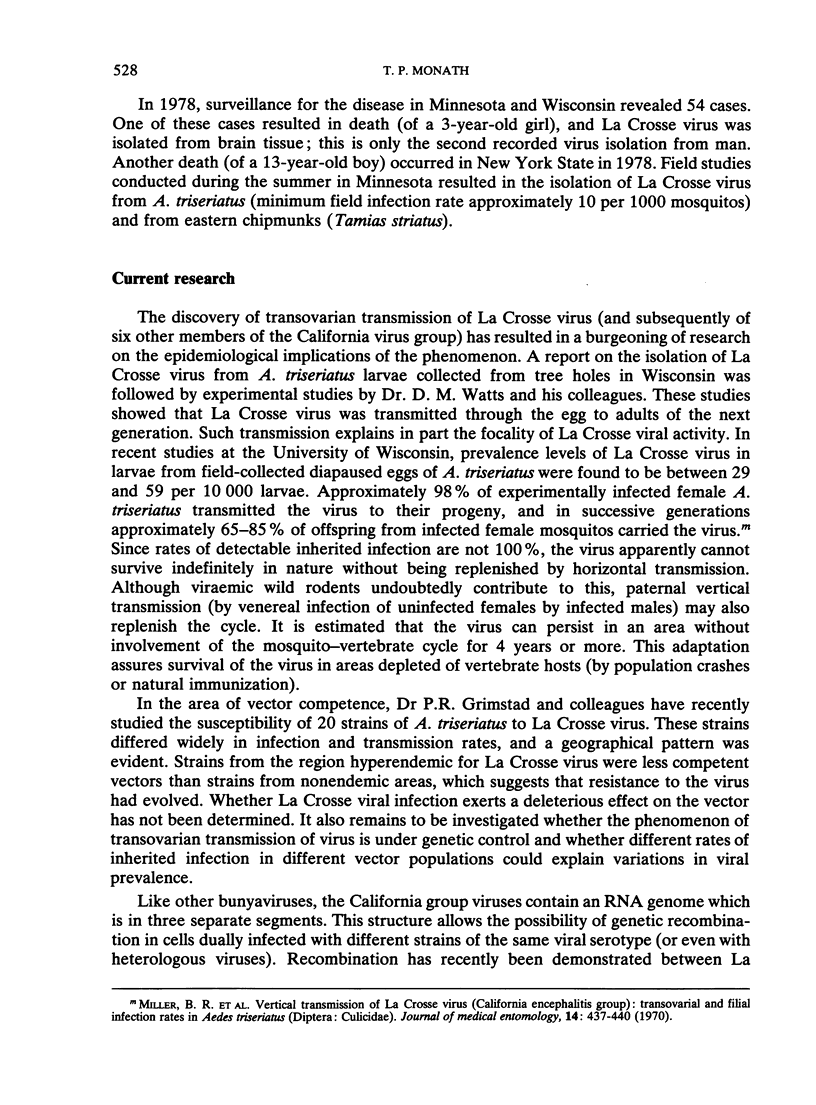

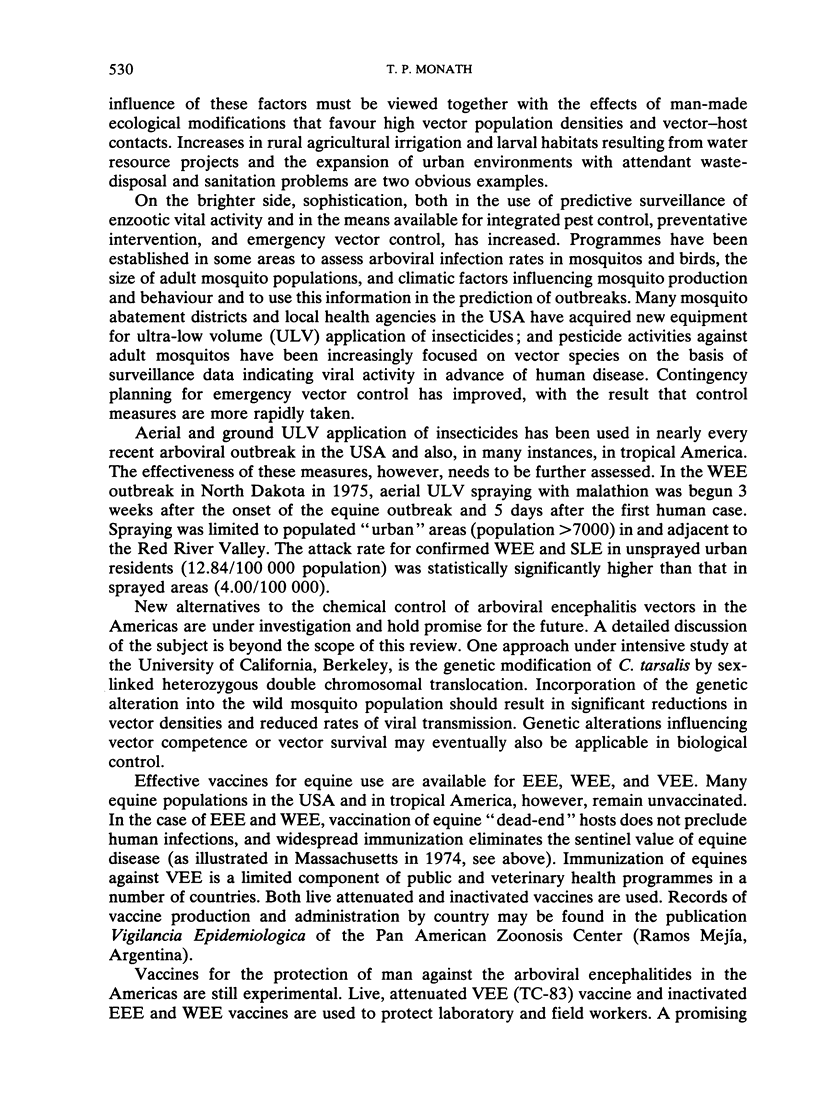
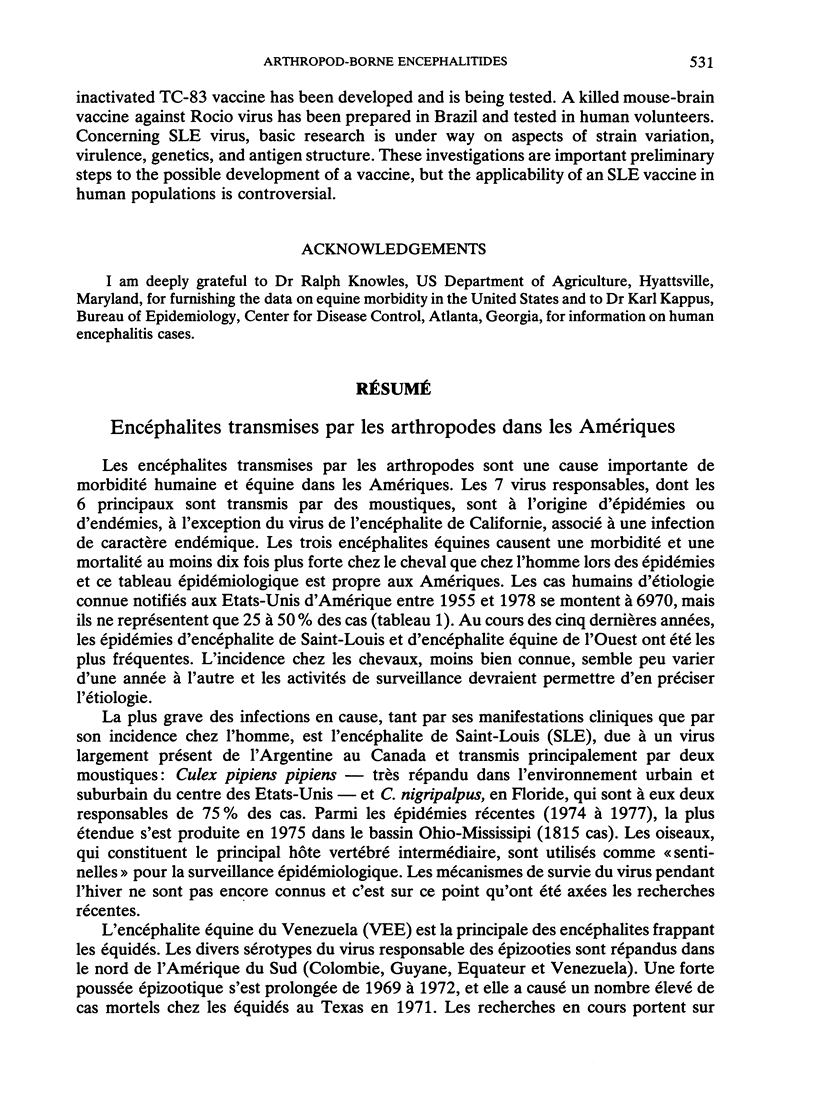

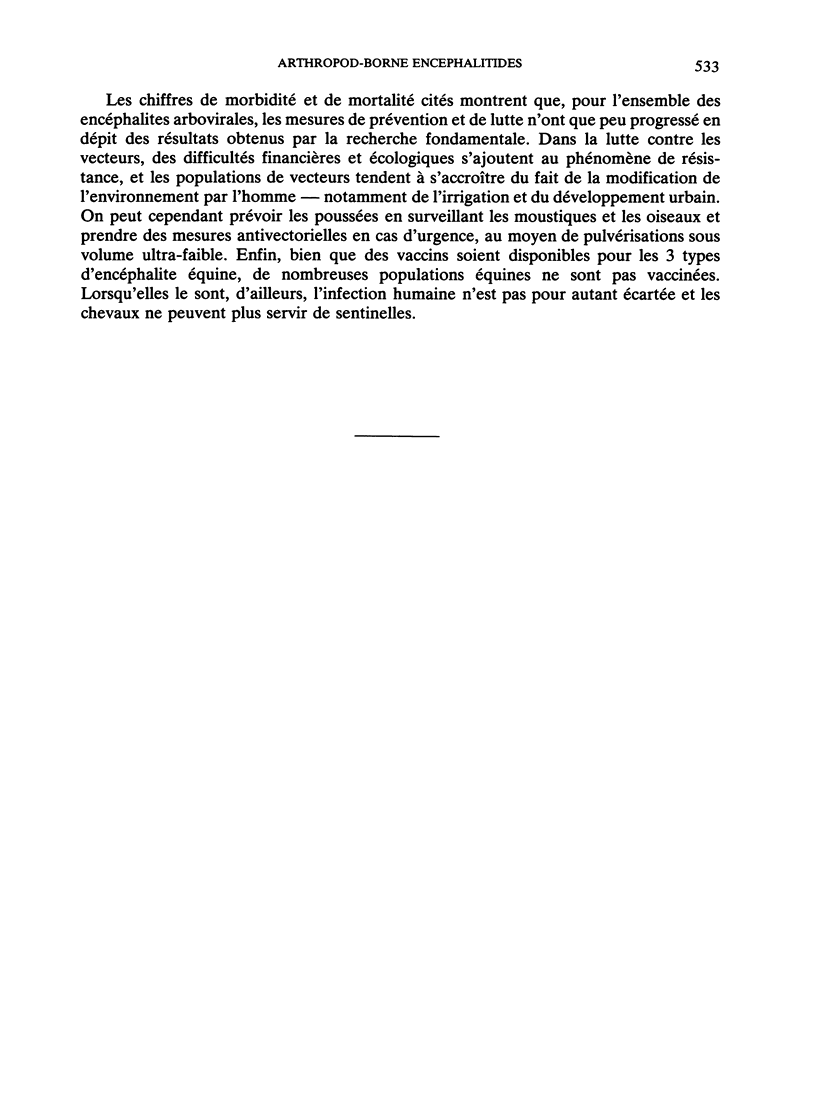
Selected References
These references are in PubMed. This may not be the complete list of references from this article.
- Bailey C. L., Eldridge B. F., Hayes D. E., Watts D. M., Tammariello R. F., Dalrymple J. M. Isolation of St. Louis encephalitis virus from overwintering Culex pipiens mosquitoes. Science. 1978 Mar 24;199(4335):1346–1349. doi: 10.1126/science.628843. [DOI] [PubMed] [Google Scholar]
- El Said L. H., Vorndam V., Gentsch J. R., Clewley J. P., Calisher C. H., Klimas R. A., Thompson W. H., Grayson M., Trent D. W., Bishop D. H. A comparison of La Crosse virus isolated obtained from different ecological niches and an analysis of the structural components of California encephalitis serogroup viruses and other bunyaviruses. Am J Trop Med Hyg. 1979 Mar;28(2):364–386. doi: 10.4269/ajtmh.1979.28.364. [DOI] [PubMed] [Google Scholar]
- Hardy J. L., Apperson G., Asman S. M., Reeves W. C. Selection of a strain of Culex tarsalis highly resistant to infection following ingestion of western equine encephalomyelitis virus. Am J Trop Med Hyg. 1978 Mar;27(2 Pt 1):313–321. doi: 10.4269/ajtmh.1978.27.313. [DOI] [PubMed] [Google Scholar]
- Hardy J. L., Reeves W. C., Sjogren R. D. Variations in the susceptiblility of field and laboratory populations of Culex tarsalis to experimental infection with western equine encephalomyelitis virus. Am J Epidemiol. 1976 May;103(5):498–505. doi: 10.1093/oxfordjournals.aje.a112251. [DOI] [PubMed] [Google Scholar]
- Rosemberg S. Neuropathological study of a new viral encephalitis: the encephalitis of São Paulo South coast (preliminary report). Rev Inst Med Trop Sao Paulo. 1977 Jul-Aug;19(4):280–282. [PubMed] [Google Scholar]
- Seymour C., Dickerman R. W., Martin M. S. Venezuelan encephalitis virus infection in neotropical bats. I. Natural infection in a Guatemalan enzootic focus. Am J Trop Med Hyg. 1978 Mar;27(2 Pt 1):290–296. doi: 10.4269/ajtmh.1978.27.290. [DOI] [PubMed] [Google Scholar]
- de Souza Lopes O., de Abreu Sacchetta L., Coimbra T. L., Pinto G. H., Glasser C. M. Emergence of a new arbovirus disease in Brazil. II. Epidemiologic studies on 1975 epidemic. Am J Epidemiol. 1978 Nov;108(5):394–401. doi: 10.1093/oxfordjournals.aje.a112637. [DOI] [PubMed] [Google Scholar]


